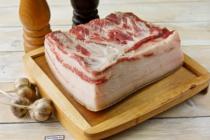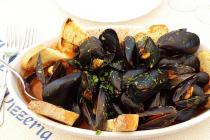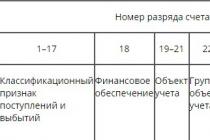Hermes (Hermius, Ermius), Greek, Lat. Mercury is the son of Zeus and the galaxy of Maya; messenger of the gods and guide of the souls of the dead to Hades, god of merchants, speakers, inventors, pilgrims and travelers, athletes, swindlers and thieves.
Hermes was the most dexterous, inventive and cunning of all the gods, which he proved on the very first day of his life. In the morning he was born (in a cave under Mount Killena in Arcadia), soon escaped from his cradle, in the afternoon he invented the lyre and learned to play it, then stole fifty cows from Apollo (and dragged them into the cave by their tails so that the tracks went in the opposite direction) , and in the evening, returning as if nothing had happened, he wrapped himself in diapers and fell asleep with the most innocent look. When Apollo appeared to punish him, Hermes made excuses so cleverly and lied so shamelessly (he also learned to speak and lie in one day) that Apollo could not stand it and dragged him straight to Zeus. The tricks of the youngest son delighted the supreme god, but for the sake of order, he ordered the stolen cows to be returned. Instead of answering, Hermes took out a lyre and began to play so skillfully and beautifully that the delighted Apollo offered to leave him the stolen cows in exchange for the lyre. Hermes agreed, and Apollo, to celebrate, gave him a golden rod and good advice: to go to Parnassus, to the priestesses there, so that they could teach him the art of fortune telling. Following this advice, Hermes received full training for his future duties on Olympus.

However, Hermes did not get to Olympus immediately and not without difficulty. His mother, being a goddess of low rank, considered the society of the Olympian gods too refined and preferred to leave her son with her, on earth. Hermes guarded the flocks of Arcadian shepherds, and in order not to get bored, he invented all sorts of things. Instead of the lyre, which he had, Hermes came up with a shepherd's pipe; Not wanting to bother himself with starting a fire the old fashioned way, he invented the flint. Later he also invented numbers, measures and the alphabet. In the end, Hermes got bored with earthly life, and he began to ask his mother for time off to go to Olympus. When his mother doubted whether the gods would accept him into their company, Hermes declared that in this case he would gather a gang of robbers and become their leader. This argument seemed very convincing to Maya, and she let her son go.

Contrary to expectations, the gods gave him a warm welcome, since they had already heard about many of his tricks. Zeus immediately entrusted Hermes with a responsible post: he appointed him as his personal messenger. True, the goddess of the rainbow Iris performed the same functions, but Hermes quickly surpassed her: if Iris only conveyed the commands of Zeus, then Hermes carried them out. He soon expanded his clientele and became not only a messenger, but also an advisor to the other gods. However, most of all he worked for Zeus, who entrusted him with especially delicate and complex matters. Hermes carried out all the instructions successfully and on time (see, for example, the articles “” and “Io”). Hermes rescued Ares from the copper barrel in which the Aloads hid him. Many heroes were grateful to Hermes for his help, including Perseus, Hercules, Orpheus, and Odysseus. By order of Zeus, he resurrected young Pelops, who was killed by his father, Tantalus.
Just like the gods and heroes, Hermes also provided assistance to mere mortals who turned to him. He protected the flocks of simple shepherds, accompanied travelers, gave strength and agility to athletes, speed of legs to runners, helped merchants make a profit - in general, any hard worker could receive support from him. Hermes did not refuse help even to swindlers and thieves, but only on the condition that they acted wisely. Fools and lazy people had nothing to expect from Hermes, so they were the only ones who complained about him.
Due to many affairs and assignments, Hermes did not have enough time to get married. However, this does not mean that he did not leave behind descendants. The beautiful Polymela gave him a son, Eudor, who was one of the leaders in the Trojan War. The nymph Themis (or Carmenta) gave birth to his son Evander, the fruit of the love of Hermes and the goddess Aphrodite was Hermaphrodite. Some authors claim that his sons were Silenus, Satyr and Pan. Of his other sons, Daphnis is also known. Odysseus and Sisyphus considered Hermes their ancestor.

The Greeks have worshiped Hermes since ancient times; This is evidenced at least by the monuments of Linear B dating back to the 13th-14th centuries. BC e. and found at Knossos. Around the 3rd century. BC e. his cult was adopted by the Romans and identified with their god of trade and profit, Mercury. Initially, he was the patron god of herds and, accordingly, the giver of wealth, which stemmed from the breeding of livestock. With the development of the market economy, Hermes became the god of trade, and since trade is associated with travel, and sometimes also with fraud, he also became the god of travelers and scammers. The thieves respected him for his thievish talent, shown on the first day after birth (Hermes demonstrated it in the future - for example, he jokingly stole a scepter from Zeus, a trident from Poseidon, and a sword from Ares). Messengers, heralds and ambassadors saw their patron and protector in Hermes, as well as, oddly enough, doctors, since he knew how to heal and knew a lot about medicinal herbs, and athletes, for whom this “swift-footed god” was a model of dexterity and agility.
The functions and adventures of Hermes are known to us from many literary monuments, starting with the Iliad and the Odyssey; The longest of Homer's hymns is also dedicated to him. He was the central figure in Sophocles's comic play The Bloodhounds (about half of the text survives). The Greeks imagined Hermes in two forms: as the ancient god of shepherds, he looked like a bearded old man, and as the messenger of the gods, he looked like a slender young man with a caduceus scepter and wings on his legs and helmet. Statues of Hermes were placed, in particular, at crossroads (herms - tetrahedral pillars with the image of his head and with inscriptions telling where the road leads), they were often decorated with medical institutions and almost always with sports facilities.
Of the ancient images of Hermes today, undoubtedly, the marble original of the statue of Praxiteles “Hermes with the Child Dionysus” (c. 340 BC), discovered in 1877 by German archaeologists in Olympia, takes first place. Many Roman copies of the Greek originals by Lysippos and Praxiteles' students have survived. On numerous vases, Hermes is mainly depicted as the guide of the souls of the dead to the afterlife.
Since the Renaissance, Hermes has been one of the most frequently depicted ancient gods, so it is almost impossible to list even the best statues of him; Let's just name a few authors: Sansovino, Giambologna, De Vries, J.B. Pigalle. Among the European artists who depicted Hermes were Correggio, Tintoretto, Rubens and others.

In the last century, Hermes with his attributes (especially the winged hat) adorned almost every bank, insurance office, chamber of commerce, etc. - there is no need to talk about masterpieces of art here. He had better luck with poets and composers. Vrchlicki dedicated his poems “Flying Mercury” (1899) and “Hermes” (1891) to him, Haydn - one of his symphonies, Vranitsky - an opera. Since ancient times, the name Hermes has been borne by the planet closest to the Sun (the Latin form is used: Mercury).

In the photo: fashionable Hermes Birkin bag
The main gods in Ancient Hellas were recognized as those who belonged to the younger generation of celestials. Once upon a time, it took away power over the world from the older generation, who personified the main universal forces and elements (see about this in the article The Origin of the Gods of Ancient Greece). The gods of the older generation are usually called titans. Having defeated the Titans, the younger gods, led by Zeus, settled on Mount Olympus. The ancient Greeks honored the 12 Olympian gods. Their list usually included Zeus, Hera, Athena, Hephaestus, Apollo, Artemis, Poseidon, Ares, Aphrodite, Demeter, Hermes, Hestia. Hades is also close to the Olympian gods, but he does not live on Olympus, but in his underground kingdom.
Gods of Ancient Greece. Video

God Poseidon (Neptune). Antique statue of the 2nd century. according to R.H.

Olympian goddess Artemis. Statue in the Louvre

Statue of Virgin Athena in the Parthenon. Ancient Greek sculptor Phidias


Venus (Aphrodite) de Milo. Statue approx. 130-100 BC.

Eros Earthly and Heavenly. Artist G. Baglione, 1602
Hymen- companion of Aphrodite, god of marriage. After his name, wedding hymns were also called hymens in Ancient Greece.
- daughter of Demeter, kidnapped by the god Hades. The inconsolable mother, after a long search, found Persephone in the underworld. Hades, who made her his wife, agreed that she should spend part of the year on earth with her mother, and the other with him in the bowels of the earth. Persephone was the personification of grain, which, being “dead” sown into the ground, then “comes to life” and comes out of it into the light.

The abduction of Persephone. Antique jug, ca. 330-320 BC.
Amphitrite- wife of Poseidon, one of the Nereids
Proteus- one of the sea deities of the Greeks. Son of Poseidon, who had the gift of predicting the future and changing his appearance
Triton- the son of Poseidon and Amphitrite, a messenger of the deep sea, blowing a shell. In appearance it is a mixture of a man, a horse and a fish. Close to the eastern god Dagon.
Eirene- goddess of peace, standing at the throne of Zeus on Olympus. In Ancient Rome - the goddess Pax.
Nika- goddess of victory. Constant companion of Zeus. In Roman mythology - Victoria
Dike- in Ancient Greece - the personification of divine truth, a goddess hostile to deception
Tyukhe- goddess of luck and good fortune. For the Romans - Fortuna
Morpheus– ancient Greek god of dreams, son of the god of sleep Hypnos
Plutos- god of wealth
Phobos(“Fear”) – son and companion of Ares
Deimos(“Horror”) – son and companion of Ares
Enyo- among the ancient Greeks - the goddess of frantic war, who arouses rage in the fighters and brings confusion into the battle. In Ancient Rome - Bellona
Titans
Titans are the second generation of gods of Ancient Greece, generated by natural elements. The first Titans were six sons and six daughters, descended from the connection of Gaia-Earth with Uranus-Sky. Six sons: Cronus (Time among the Romans - Saturn), Ocean (father of all rivers), Hyperion, Kay, Kriy, Iapetus. Six daughters: Tethys(Water), Theia(Shine), Rhea(Mother Mountain?), Themis (Justice), Mnemosyne(Memory), Phoebe.

Uranus and Gaia. Ancient Roman mosaic 200-250 AD.
In addition to the Titans, Gaia gave birth to Cyclopes and Hecatoncheires from her marriage with Uranus.
Cyclops- three giants with a large, round, fiery eye in the middle of their forehead. In ancient times - personifications of clouds from which lightning flashes
Hecatoncheires- “hundred-handed” giants, against whose terrible strength nothing can resist. Incarnations of terrible earthquakes and floods.
The Cyclopes and Hecatoncheires were so strong that Uranus himself was horrified by their power. He tied them up and threw them deep into the earth, where they are still rampaging, causing volcanic eruptions and earthquakes. The presence of these giants in the belly of the earth began to cause terrible suffering. Gaia persuaded her youngest son, Cronus, to take revenge on his father, Uranus, by castrating him.
Cron did it with a sickle. From the drops of blood of Uranus that spilled, Gaia conceived and gave birth to three Erinyes - goddesses of vengeance with snakes on their heads instead of hair. The names of Erinny are Tisiphone (the killing avenger), Alecto (the tireless pursuer) and Megaera (the terrible). From that part of the seed and blood of castrated Uranus that fell not on the ground, but in the sea, the goddess of love Aphrodite was born.
Night-Nyukta, in anger at the lawlessness of Krona, gave birth to terrible creatures and deities Tanata (Death), Eridu(Discord) Apata(Deception), goddesses of violent death Ker, Hypnos(Dream-Nightmare), Nemesis(Revenge), Gerasa(Old age), Charona(carrier of the dead to the underworld).
Power over the world has now passed from Uranus to the Titans. They divided the universe among themselves. Cronus became the supreme god instead of his father. The ocean gained power over a huge river, which, according to the ideas of the ancient Greeks, flows around the entire earth. Four other brothers of Cronos reigned in the four cardinal directions: Hyperion - in the East, Crius - in the south, Iapetus - in the West, Kay - in the North.
Four of the six elder titans married their sisters. From them came the younger generation of titans and elemental deities. From the marriage of Oceanus with his sister Tethys (Water), all the earth's rivers and Oceanid water nymphs were born. Titan Hyperion - (“high-walking”) took his sister Theia (Shine) as his wife. From them were born Helios (Sun), Selena(Moon) and Eos(Dawn). From Eos were born the stars and the four gods of the winds: Boreas(North wind), Note(South wind), Marshmallow(west wind) and Eurus(Eastern wind). The Titans Kay (Heavenly Axis?) and Phoebe gave birth to Leto (Night Silence, mother of Apollo and Artemis) and Asteria (Starlight). Cronus himself married Rhea (Mother Mountain, the personification of the productive power of mountains and forests). Their children are the Olympic gods Hestia, Demeter, Hera, Hades, Poseidon, Zeus.
The Titan Crius married the daughter of Pontus Eurybia, and the Titan Iapetus married the oceanid Clymene, who gave birth to the Titans Atlas (he holds the sky on his shoulders), the arrogant Menoetius, the cunning Prometheus (“thinking first, foreseeing”) and the feeble-minded Epimetheus (“thinking after").
From these titans came others:
Hesperus- god of the evening and the evening star. His daughters from the night-Nyukta are the nymphs Hesperides, who guard on the western edge of the earth a garden with golden apples, once presented by Gaia-Earth to the goddess Hera at her marriage to Zeus
Ory- goddesses of parts of the day, seasons and periods of human life.
Charites- goddess of grace, fun and joy of life. There are three of them - Aglaya (“Rejoicing”), Euphrosyne (“Joy”) and Thalia (“Abundance”). A number of Greek writers have different names for charites. In Ancient Rome they corresponded to grace
The religion of ancient Greece has two main characteristics:
Polytheism (polytheism). With all the many Greek gods, 12 main ones can be distinguished. The pantheon of pan-Greek gods emerged in the classical era.
Each deity in the Greek pantheon performed strictly defined functions:
- · Zeus - the main god, ruler of the sky, thunderer, personified strength and power
- · Hera - wife of Zeus, goddess of marriage, patroness of the family. The image of Hera grew from the image of the cow goddess, the patroness of Mycenae
- · Poseidon is the brother of Zeus. Poseidon was the ancient sea deity of Pelaponesse. The cult of Poseidon, having absorbed a number of local cults, became the god of the sea and the patron saint of horses
- · Athena is the goddess of wisdom and just war. Athena is an ancient deity - the patroness of cities and city fortifications. Her other name is Pallas, also an epithet meaning “Shaker of the Spear.” According to classical mythology, Athena acts as a warrior goddess, she was depicted in full armor
- · Aphrodite - the idealized personification of femininity, the goddess of love and beauty, born from sea foam
- · Ares - god of war
- · Artemis is one of the most revered deities by the Greeks. It is usually believed that the cult of Artemis originated in Asia Minor, where she was considered the patroness of fertility. In classical mythology, Artemis appears as a virgin goddess-hunter, usually with her companion - a doe.
- · Apollo in Pelaponesse was considered a shepherd deity. Near Thebes, Apollo Ismenias was revered: this epithet is the name of a local river, which was once deified by the inhabitants. Apollo later became one of the most popular gods in Greece. He is considered the embodiment of the national spirit. The main functions of Apollo: divination of the future, patronage of the sciences and arts, healing, cleansing from all filth, deity of light, correct, orderly world order.
- · Hermes - the god of eloquence, trade and theft, the messenger of the gods, the guide of the souls of the dead to the kingdom of Hades - the god of the underworld
- · Hephaestus - god of fire, patron of artisans and especially blacksmiths
- Demeter - goddess of fertility, patroness of agriculture
- · Hestia - goddess of the hearth
The ancient Greek gods lived on the snow-capped Mount Olympus. In addition to the gods, there was a cult of heroes - semi-deities born from the marriage of gods and mortals. Hermes, Theseus, Jason, Orpheus are the heroes of many ancient Greek poems and myths.
The second feature of the ancient Greek religion is anthropomorphism - the human-likeness of the gods.
The ancient Greeks understood deity as the Absolute. Cosmos is an absolute deity, and the ancient gods are those ideas that are embodied in space, these are the laws of nature that govern it. Therefore, all the advantages and all the shortcomings of nature and human life are reflected in the gods. The ancient Greek gods have the appearance of a person, they are similar to him not only in appearance, but in behavior: they have wives and husbands, enter into relationships similar to humans, have children, fall in love, are jealous, take revenge, i.e. they have the same advantages and disadvantages, as mortals. We can say that gods are absolutized people. This trait influenced the entire character of ancient Greek civilization and determined its main feature - humanism.
The anthropomorphic essence of the gods naturally suggests that one can achieve their favor through material means - gifts (including human and other sacrifices), persuasion (that is, turn to them with prayer, which, among other things, may have the nature of self-praise or even deception ) or special actions.
Ancient culture grows on the basis of the pantheism of the ancient Greek religion, which arises as a result of a sensual understanding of the cosmos: ideal gods are only a generalization of the corresponding areas of nature, both rational and irrational. This is fate, recognized as a necessity, and it is impossible to go beyond it. From this we can conclude that ancient culture develops under the sign of fatalism, which ancient man overcomes with ease, fighting fate like a hero. This is the meaning of life.
Therefore, the cult of the hero is especially characteristic of ancient Greek culture. In antiquity there is an amazing synthesis of fatalism and heroism, arising from a special understanding of freedom. Freedom of action gives rise to heroism. Pantheism and the cult of heroes are most clearly expressed in ancient Greek mythology.
Cosmogonic themes did not occupy a prominent place in folk beliefs. The idea of a creator god was absent in this religion. According to Hesiod, from Chaos were born Earth, Darkness, Night, and then Light, Ether, Day, Sky, Sea and other great forces of nature. From Heaven and Earth the older generation of gods was born, and from them Zeus and other Olympian gods.
Rhea, captured by Cronus, bore him bright children - the Virgin - Hestia, Demeter and the golden-shod Hera, the glorious might of Hades, who lives underground, and the provider - Zeus, the father of both immortals and mortals, whose thunder makes the wide earth tremble. Hesiod "Theogony"
Greek literature arose from mythology. Myth- This is an ancient man’s idea of the world around him. Myths were created at a very early stage in the development of society in various areas of Greece. Later, all these myths merged into a single system.
With the help of myths, the ancient Greeks tried to explain all natural phenomena, presenting them in the form of living beings. At first, experiencing a strong fear of natural elements, people depicted the gods in a terrible animal form (Chimera, Gorgon Medusa, Sphinx, Lernaean Hydra).
However, later the gods become anthropomorphic, that is, they have a human appearance and are characterized by a variety of human qualities (jealousy, generosity, envy, generosity). The main difference between gods and people was their immortality, but for all their greatness, the gods communicated with mere mortals and even often entered into love relationships with them in order to give birth to a whole tribe of heroes on earth.
There are 2 types of ancient Greek mythology:
- cosmogonic (cosmogony - the origin of the world) - ends with the birth of Kron
- theogonic (theogony - the origin of gods and deities)

The mythology of Ancient Greece went through 3 main stages in its development:
- pre-Olympic- This is mainly cosmogonic mythology. This stage begins with the idea of the ancient Greeks that everything came from Chaos, and ends with the murder of Cronus and the division of the world between the gods.
- Olympic(early classic) – Zeus becomes the supreme deity and, with a retinue of 12 gods, settles on Olympus.
- late heroism- heroes are born from gods and mortals who help the gods in establishing order and destroying monsters.
Poems were created on the basis of mythology, tragedies were written, and lyricists dedicated their odes and hymns to the gods.

There were two main groups of gods in Ancient Greece:
- titans - gods of the second generation (six brothers - Ocean, Kay, Crius, Hipperion, Iapetus, Kronos and six sisters - Thetis, Phoebe, Mnemosyne, Theia, Themis, Rhea)
- olympian gods - Olympians - gods of the third generation. The Olympians included the children of Kronos and Rhea - Hestia, Demeter, Hera, Hades, Poseidon and Zeus, as well as their descendants - Hephaestus, Hermes, Persephone, Aphrodite, Dionysus, Athena, Apollo and Artemis. The supreme god was Zeus, who deprived his father Kronos (the god of time) of power.
The Greek pantheon of the Olympian gods traditionally included 12 gods, but the composition of the pantheon was not very stable and sometimes numbered 14-15 gods. Usually these were: Zeus, Hera, Athena, Apollo, Artemis, Poseidon, Aphrodite, Demeter, Hestia, Ares, Hermes, Hephaestus, Dionysus, Hades. The Olympian gods lived on the sacred Mount Olympus ( Olympos) in Olympia, off the coast of the Aegean Sea.

Translated from ancient Greek, the word pantheon means "all gods". Greeks
deities were divided into three groups:
- Pantheon (great Olympian gods)
- Lesser deities
- Monsters
Heroes occupied a special place in Greek mythology. The most famous of them:
v Odysseus
Supreme gods of Olympus
|
Greek gods |
Functions |
Roman gods |
|
god of thunder and lightning, sky and weather, law and fate, attributes - lightning (three-pronged pitchfork with jagged edges), scepter, eagle or chariot drawn by eagles |
||
|
goddess of marriage and family, goddess of the sky and starry skies, attributes - diadem (crown), lotus, lion, cuckoo or hawk, peacock (two peacocks pulled her cart) |
||
|
Aphrodite |
“foam-born”, goddess of love and beauty, Athena, Artemis and Hestia were not subject to her, attributes - rose, apple, shell, mirror, lily, violet, belt and golden cup, bestowing eternal youth, retinue - sparrows, doves, dolphin, satellites - Eros, harites, nymphs, oras. |
|
|
god of the underworld of the dead, “generous” and “hospitable”, attribute – a magic invisibility hat and the three-headed dog Cerberus |
||
|
the god of treacherous war, military destruction and murder, he was accompanied by the goddess of discord Eris and the goddess of frantic war Enio, attributes - dogs, a torch and a spear, the chariot had 4 horses - Noise, Horror, Shine and Flame |
||
|
god of fire and blacksmithing, ugly and lame on both legs, attribute – blacksmith’s hammer |
||
|
goddess of wisdom, crafts and art, goddess of just war and military strategy, patroness of heroes, “owl-eyed”, used male attributes (helmet, shield - aegis made of Amalthea goat skin, decorated with the head of the Gorgon Medusa, spear, olive, owl and snake), appeared accompanied by Niki |
||
|
god of invention, theft, trickery, trade and eloquence, patron of heralds, ambassadors, shepherds and travelers, invented measures, numbers, taught people, attributes - a winged staff and winged sandals |
Mercury |
|
|
Poseidon |
god of the seas and all bodies of water, floods, droughts and earthquakes, patron of sailors, attribute - trident, which causes storms, breaks rocks, knocks out springs, sacred animals - bull, dolphin, horse, sacred tree - pine |
|
|
Artemis |
goddess of hunting, fertility and female chastity, later - goddess of the Moon, patroness of forests and wild animals, forever young, she is accompanied by nymphs, attributes - a hunting bow and arrows, sacred animals - a doe and a bear |
|
|
Apollo (Phoebus), Cyfared |
“golden-haired”, “silver-haired”, god of light, harmony and beauty, patron of the arts and sciences, leader of the muses, predictor of the future, attributes - silver bow and golden arrows, golden cithara or lyre, symbols - olive, iron, laurel, palm tree, dolphin , swan, wolf |
|
|
goddess of the hearth and sacrificial fire, virgin goddess. accompanied by 6 priestesses - vestals, who served the goddess for 30 years |
||
|
“Mother Earth”, goddess of fertility and agriculture, plowing and harvest, attributes – a sheaf of wheat and a torch |
||
|
god of fruitful forces, vegetation, viticulture, winemaking, inspiration and fun |
Bacchus, Bacchus |
Minor Greek gods
|
Greek gods |
Functions |
Roman gods |
|
Asclepius |
“opener”, god of healing and medicine, attribute – a staff entwined with snakes |
|
|
Eros, Cupid |
the god of love, the “winged boy”, was considered the product of a dark night and a bright day, Heaven and Earth, attributes - a flower and a lyre, later - arrows of love and a flaming torch |
|
|
“the sparkling eye of the night,” the moon goddess, queen of the starry sky, has wings and a golden crown |
||
|
Persephone |
goddess of the kingdom of the dead and fertility |
Proserpina |
|
goddess of victory, depicted winged or in a pose of rapid movement, attributes - bandage, wreath, later - palm tree, then - weapons and trophy |
Victoria |
|
|
goddess of eternal youth, depicted as a chaste girl pouring nectar |
||
|
“rose-fingered”, “beautiful-haired”, “golden-throned” goddess of the morning dawn |
||
|
goddess of happiness, chance and luck |
||
|
sun god, owner of seven herds of cows and seven herds of sheep |
||
|
Kron (Chronos) |
god of time, attribute – sickle |
|
|
goddess of furious war |
||
|
Hypnos (Morpheus) |
||
|
goddess of flowers and gardens |
||
|
god of the west wind, messenger of the gods |
||
|
Dike (Themis) |
goddess of justice, justice, attributes - scales in the right hand, blindfold, cornucopia in the left hand; The Romans put a sword in the goddess's hand instead of a horn |
|
|
god of marriage, marital ties |
Thalassius |
|
|
Nemesis |
winged goddess of revenge and retribution, punishing violations of social and moral norms, attributes - scales and bridle, sword or whip, chariot drawn by griffins |
Adrastea |
|
"golden-winged", goddess of the rainbow |
||
|
goddess of the earth |
In addition to Olympus in Greece, there was the sacred Mount Parnassus, where they lived muses – 9 sisters, Greek deities who personified poetic and musical inspiration, patroness of the arts and sciences.

Greek muses
|
What does it patronize? |
Attributes |
|
|
Calliope ("beautifully spoken") |
muse of epic or heroic poetry |
wax tablet and stylus (bronze writing rod) |
|
(“glorifying”) |
muse of history |
papyrus scroll or scroll case |
|
(“pleasant”) |
muse of love or erotic poetry, lyrics and marriage songs |
kifara (plucked string musical instrument, a type of lyre) |
|
(“beautifully pleasing”) |
muse of music and lyric poetry |
aulos (a wind musical instrument similar to a pipe with a double reed, the predecessor of the oboe) and syringa (a musical instrument, a type of longitudinal flute) |
|
(“heavenly”) |
muse of astronomy |
spotting scope and sheet with celestial signs |
|
Melpomene (“singing”) |
muse of tragedy |
wreath of grape leaves or ivy, theatrical robe, tragic mask, sword or club. |
|
Terpsichore (“delightfully dancing”) |
muse of dance |
wreath on the head, lyre and plectrum (mediator) |
|
Polyhymnia (“a lot of singing”) |
muse of sacred song, eloquence, lyricism, chant and rhetoric |
|
|
(“blooming”) |
muse of comedy and bucolic poetry |
comic mask in hands and wreath ivy on head |
Lesser deities in Greek mythology they are satyrs, nymphs and oras.
Satires - (Greek satyroi) are forest deities (the same as in Rus' goblin), demons fertility, retinue of Dionysus. They were depicted as goat-legged, hairy, with horse tails and small horns. Satyrs are indifferent to people, mischievous and cheerful, they were interested in hunting, wine, and pursued forest nymphs. Their other hobby was music, but they only played wind instruments that produced sharp, piercing sounds - the flute and the pipe. In mythology, they personified the rude, base nature in nature and man, so they were represented with ugly faces - with blunt, wide noses, swollen nostrils, tousled hair.

Nymphs – (the name means “source”, among the Romans - “bride”) the personification of living elemental forces, noticed in the murmur of a stream, in the growth of trees, in the wild beauty of mountains and forests, spirits of the earth’s surface, manifestations of natural forces acting besides man in the solitude of grottoes , valleys, forests, far from cultural centers. They were depicted as beautiful young girls with wonderful hair, wearing wreaths and flowers, sometimes in a dancing pose, with bare legs and arms, and loose hair. They engage in yarn and weaving, sing songs, dance in the meadows to the flute of Pan, hunt with Artemis, participate in the noisy orgies of Dionysus, and constantly fight with annoying satyrs. In the minds of the ancient Greeks, the world of nymphs was very vast.
The azure pond was full of flying nymphs,
The garden was animated by dryads,
And the bright water spring sparkled from the urn
Laughing naiads.
F. Schiller
Nymphs of the mountains - oreads,
nymphs of forests and trees - dryads,
nymphs of springs – naiads,
nymphs of the oceans - oceanids,
nymphs of the sea - nerids,
nymphs of the valleys - drink,
nymphs of meadows - limnades.

Ory - goddesses of the seasons, were in charge of order in nature. Guardians of Olympus, now opening and then closing its cloud gates. They are called the gatekeepers of the sky. Harnessing the horses of Helios.

There are numerous monsters in many mythologies. There were a lot of them in ancient Greek mythology too: Chimera, Sphinx, Lernaean Hydra, Echidna and many others.
In the same vestibule, crowds of shadows of monsters crowd:
Biform scylla and herds of centaurs live here,
Here Briareus the hundred-armed lives, and the dragon from Lernaean
The swamp hisses, and the Chimera frightens enemies with fire,
Harpies fly in a flock around three-body giants...
Virgil, "Aeneid"
Harpies - these are evil kidnappers of children and human souls, suddenly swooping in and disappearing as suddenly as the wind, terrifying people. Their number ranges from two to five; are depicted as wild half-women, half-birds of a disgusting appearance with the wings and paws of a vulture, with long sharp claws, but with the head and chest of a woman.

Gorgon Medusa - a monster with a woman’s face and snakes instead of hair, whose gaze turned a person to stone. According to legend, she was a beautiful girl with beautiful hair. Poseidon, seeing Medusa and falling in love, seduced her in the temple of Athena, for which the goddess of wisdom, in anger, turned the hair of the Gorgon Medusa into snakes. The Gorgon Medusa was defeated by Perseus, and her head was placed on the aegis of Athena.

Minotaur - a monster with the body of a man and the head of a bull. He was born from the unnatural love of Pasiphae (the wife of King Minos) and a bull. Minos hid the monster in the Knossos labyrinth. Every eight years, 7 boys and 7 girls descended into the labyrinth, destined for the Minotaur as victims. Theseus defeated the Minotaur, and with the help of Ariadne, who gave him a ball of thread, he got out of the labyrinth.

Cerberus (Kerberus) - this is a three-headed dog with a snake tail and snake heads on its back, guarding the exit from the kingdom of Hades, not allowing the dead to return to the kingdom of the living. He was defeated by Hercules during one of his labors.

Scylla and Charybdis - These are sea monsters located within an arrow's flight distance of each other. Charybdis is a sea whirlpool that absorbs water three times a day and spews it out the same number of times. Scylla (“barking”) is a monster in the form of a woman whose lower body was turned into 6 dog heads. When the ship passed by the rock where Scylla lived, the monster, with all its jaws open, abducted 6 people from the ship at once. The narrow strait between Scylla and Charybdis posed a mortal danger to everyone who sailed through it.

There were also other mythical characters in Ancient Greece.
Pegasus - winged horse, favorite of the muses. He flew at the speed of the wind. Riding Pegasus meant receiving poetic inspiration. He was born at the source of the Ocean, therefore he was named Pegasus (from Greek “stormy current”). According to one version, he jumped out of the body of the gorgon Medusa after Perseus cut off her head. Pegasus delivered thunder and lightning to Zeus on Olympus from Hephaestus, who made them.

From the foam of the sea, from the azure wave,
Faster than an arrow and more beautiful than a string,
An amazing fairy horse is flying
And easily catches the heavenly fire!
He loves to splash in colored clouds
And often walks in magical verses.
So that the ray of inspiration in the soul does not go out,
I saddle you, snow-white Pegasus!
Unicorn - a mythical creature symbolizing chastity. Usually depicted as a horse with one horn coming out of its forehead. The Greeks believed that the unicorn belonged to Artemis, the goddess of the hunt. Subsequently, in medieval legends there was a version that only a virgin could tame him. Once you catch a unicorn, you can only hold it with a golden bridle.

Centaurs - wild mortal creatures with the head and torso of a man on the body of a horse, inhabitants of mountains and forest thickets, accompany Dionysus and are distinguished by their violent temperament and intemperance. Presumably, centaurs were originally the embodiment of mountain rivers and stormy streams. In heroic myths, centaurs are the educators of heroes. For example, Achilles and Jason were raised by the centaur Chiron.














